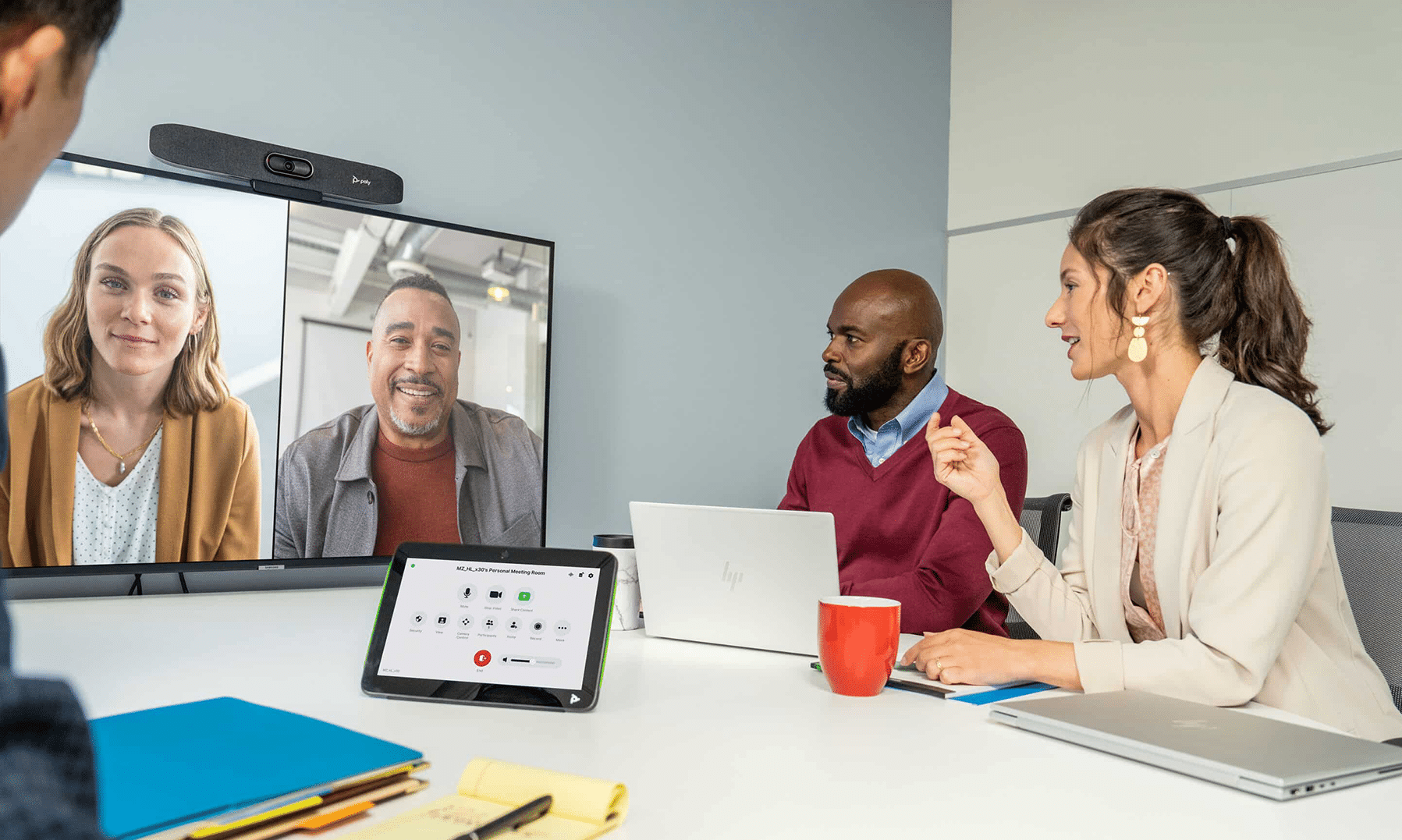What hybrid work looks like can vary by employee and even by the day. A hodgepodge of work styles and schedules makes it hard to plan spaces and technologies. How can you create the best collaboration experience? Jennifer Adams, Sr. Director, Hybrid Work Solutions Messaging and NPI at Poly, joins The Collaboration Space to share advice about creating collaboration spaces for every work style.
Watch the AVI-SPL podcast with Poly
The hybrid workplace is maturing
Many companies have decided that a hybrid approach works best for their teams. Employees come in a few days a week, but they get to choose where they can work most effectively for the kinds of tasks they need to accomplish at the time.
Executives and employees have had time to adjust to hybrid work. It’s causing less anxiety than it did in the beginning, but the complexity of managing spaces and meeting technology needs can be a hassle. Teams can have employees in different locations and on different schedules, while using more technology to work together effectively.
Align spaces to preferred work styles
For hybrid work, organizations need to know if they have the right number of desks, conference rooms, and other spaces. Many are redesigning spaces that will be used less or differently than in the past. They’re also trying to balance facility costs with less predictable office needs.
Planning spaces is difficult if you don’t know how many people are going to come in each day. Some companies are adapting by implementing hoteling and flexible meeting spaces, as well as flexible technologies. It helps if facility managers, IT teams, and HR departments work together on planning.
Some work styles require assigned spaces, especially since those who spend more time in the office expect to have their own space. For those who want to come in less, working in shared spaces is a trade-off they’re often willing to make for the flexibility they get in return. It’s important that shared spaces include flexible technology to accommodate a variety of work styles. It also helps to have more than one kind of hoteling space.
How technology improves meeting equity
Equity means taking employees’ unique differences into account to deliver experiences that are right for them. With a variety of work styles and technology preferences, it can be difficult to choose which tools to invest in to accommodate everyone at your organization.
To improve meeting equity, many companies have been investing in artificial intelligence (AI). Poly’s DirectorAI smart camera technology, for example, features people framing and presenter tracking to help ensure all meeting participants are included, no matter where they are.
Technology can also improve employee flexibility and mobility by allowing them to easily switch between devices and collaboration platforms. This is useful for employees who travel or frequently move between home and office.
It can be tempting to purchase one-size-fits-all solutions because you get a volume discount, and you only have a single system to manage and support. However, solutions are not a good investment if they only work for a small fraction of your employees.
Support hybrid employees with flexible solutions
Poly and AVI-SPL help companies understand trends so you can choose room solutions that accommodate a range of schedules and work styles. Poly | HP also has tools and data to help you understand work styles, while AVI-SPL uses VR design to test solutions before you make the investment.
To create the best collaboration experience for every work style, AVI-SPL and Poly can help. For more information, get in touch with AVI-SPL today.

